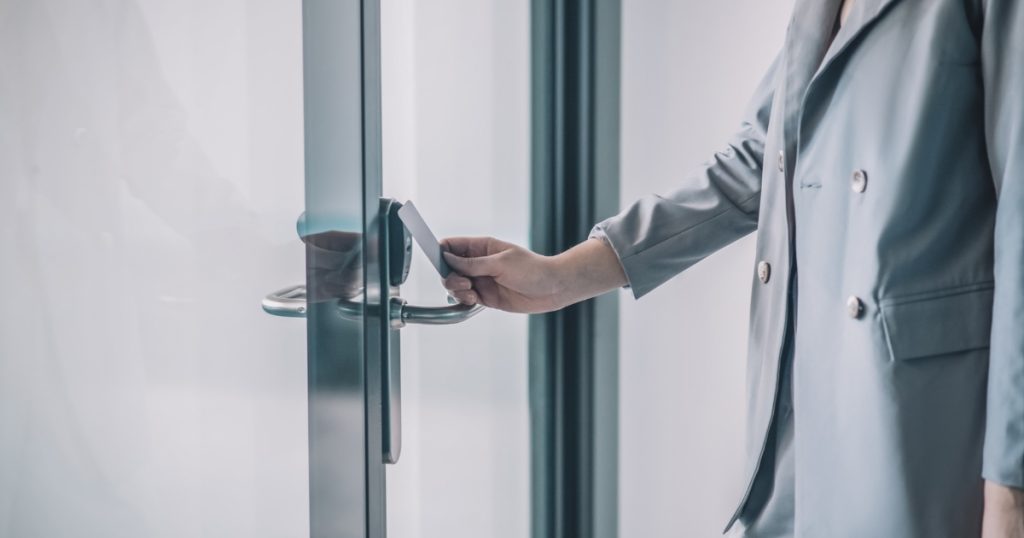An office lockout can be a highly frustrating and inconvenient experience for any employee or employer. In an era where security is paramount, such situations can have a severe impact on productivity and business continuity.
In this comprehensive guide, we will discuss the essential do’s and don’ts during an office lockout. We will also provide useful tips and insights to help you prevent such incidents in the future. So, let’s get started.
Understanding Office Lockouts
An office lockout occurs when individuals are unable to access the office premises due to a locked door, lost key, or malfunctioning security system. It is essential to understand the various causes of office lockouts and their effects to better manage and prevent such situations in the future.
Causes of Office Lockouts
Office lockouts can happen for several reasons. Some common causes include:
- Lost or misplaced keys: This is the most common cause of office lockouts. Employees may lose their keys or forget them at home or in their cars.
- Damaged locks: Locks can become damaged due to wear and tear, vandalism, or attempted break-ins, rendering them inoperable.
- Key breakage: Keys can break off inside the lock, making it impossible to unlock the door.
- Electronic access control failure: Electronic systems can malfunction or fail due to power outages, software issues, or hardware problems.
Effects of Office Lockouts
Office lockouts can have several negative effects on both employees and employers, including:
- Lost productivity: Employees are unable to work during a lockout, which results in lost productivity for the company.
- Increased stress: Being locked out can cause stress and anxiety for employees, particularly if they have important tasks or meetings scheduled.
- Potential damage to property: Attempting to force entry into the office can result in damage to doors, windows, or locks, which can be costly to repair.
- Security risks: A lockout may leave the office vulnerable to theft or vandalism, especially if the area is left unattended.
Do’s during an Office Lockout
During an office lockout, it is crucial to follow specific guidelines to ensure the safety and security of employees and the workplace. Here are some key do’s to remember.
Stay Calm
When you realize you are locked out of the office, it is essential to remain calm. Panic and frustration can cloud your judgement and lead to poor decision-making. Take a deep breath, clear your thoughts, and focus on finding a solution to the problem.
Assess the Situation
Before taking any action, assess the situation carefully. Determine the cause of the lockout, whether it is due to a lost key, damaged lock, or electronic system failure. Understanding the cause will help you decide on the best course of action to resolve the issue.
Notify the Appropriate Authorities
Once you have assessed the situation, notify the relevant parties. This may include your supervisor, building management, or security personnel. Informing the appropriate authorities will ensure that everyone is aware of the situation and can provide assistance if necessary.
Seek Professional Help
Depending on the cause of the lockout, it may be necessary to seek professional assistance. If the lockout is due to a lost key or damaged lock, contact a reputable locksmith to help you gain access to the office.
If the issue is related to an electronic access control system, get in touch with the system provider or a qualified commercial locksmith to resolve the problem.
Don’ts during an Office Lockout
During an office lockout, there are specific actions you should avoid to prevent further complications or damage. Here are some important don’ts to keep in mind.
Avoid DIY Techniques
Attempting to unlock the door using improvised tools or methods can cause damage to the lock or door and may even result in personal injury. It is best to leave the task to professionals who have the necessary expertise and equipment to handle the situation safely and effectively.
Don’t Break Windows or Doors
Breaking windows or doors to gain entry is not only dangerous but can also result in costly repairs. Furthermore, it can pose security risks, as the damaged entry points can be exploited by intruders. Always seek professional help to resolve a lockout situation.
Don’t Leave the Area Unattended
Leaving the area unattended during a lockout can expose the office to security threats, such as theft or vandalism. If possible, designate someone to remain at the scene until the issue is resolved. This will help maintain security and deter any potential intruders.
Preventing Office Lockouts
Preventing office lockouts is critical to maintaining a secure and productive work environment. Here are some strategies to minimize the risk of lockouts.
Implement Key Control Policies
Establish and enforce key control policies, such as issuing keys only to authorized personnel, maintaining a key log, and requiring employees to return keys when they leave the company. This can help reduce the risk of lost or misplaced keys, minimizing the likelihood of lockouts.
Use Keyless Entry Systems
Keyless entry systems, such as electronic key cards or biometric scanners, can help prevent lockouts by eliminating the need for physical keys. These systems also offer additional security benefits and can be easily updated or reprogrammed if needed.
Maintain Locks and Security Systems
Regularly inspect and maintain locks and security systems to ensure they are in good working order. This can help prevent malfunctions that can lead to office lockouts. Schedule routine maintenance checks and promptly address any issues or concerns.
Train Employees on Lockout Procedures
Provide employees with training on lockout procedures, including what to do in case of a lockout and whom to contact for assistance. Ensuring that employees are knowledgeable about proper lockout procedures can help prevent panic and confusion during an incident and ensure a swift resolution.
Conclusion
An office lockout is a challenging situation that can have significant consequences on productivity, security, and employee morale.
By understanding the causes and effects of office lockouts, you can take appropriate action during such incidents and prevent them from happening in the future.
Remember the essential do’s and don’ts during a lockout: stay calm, assess the situation, notify the appropriate authorities, and seek professional help.
Avoid DIY techniques, breaking windows or doors, and leaving the area unattended. To prevent office lockouts, implement key control policies, use keyless entry systems, maintain locks and security systems, and train employees on lockout procedures.
By following these guidelines and taking a proactive approach to office security, you can minimize the risk of lockouts and ensure a safe, secure, and productive work environment for everyone.

